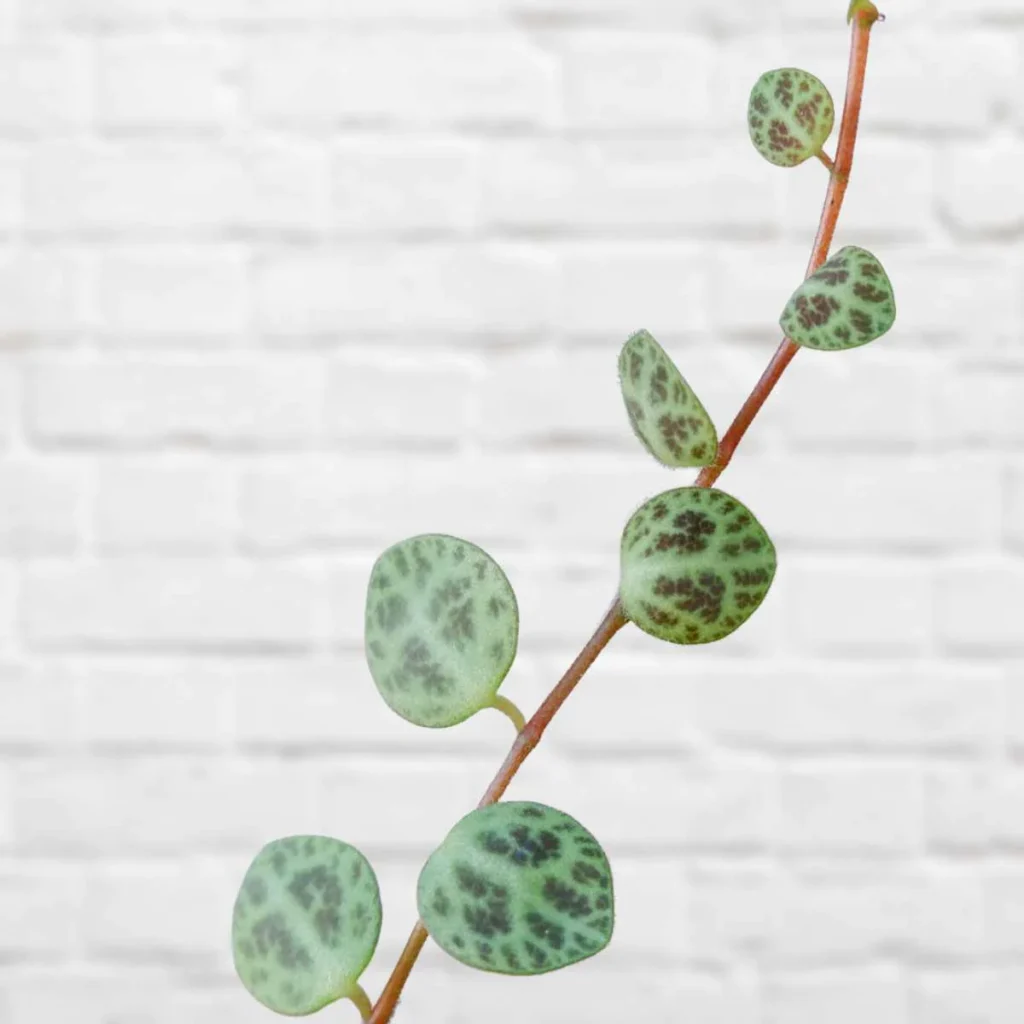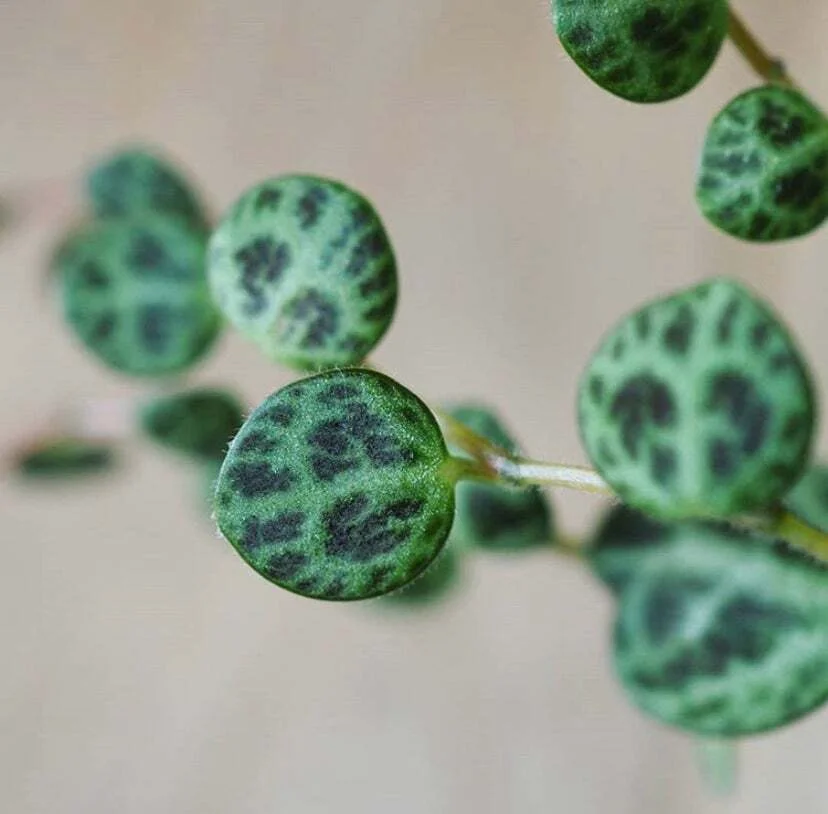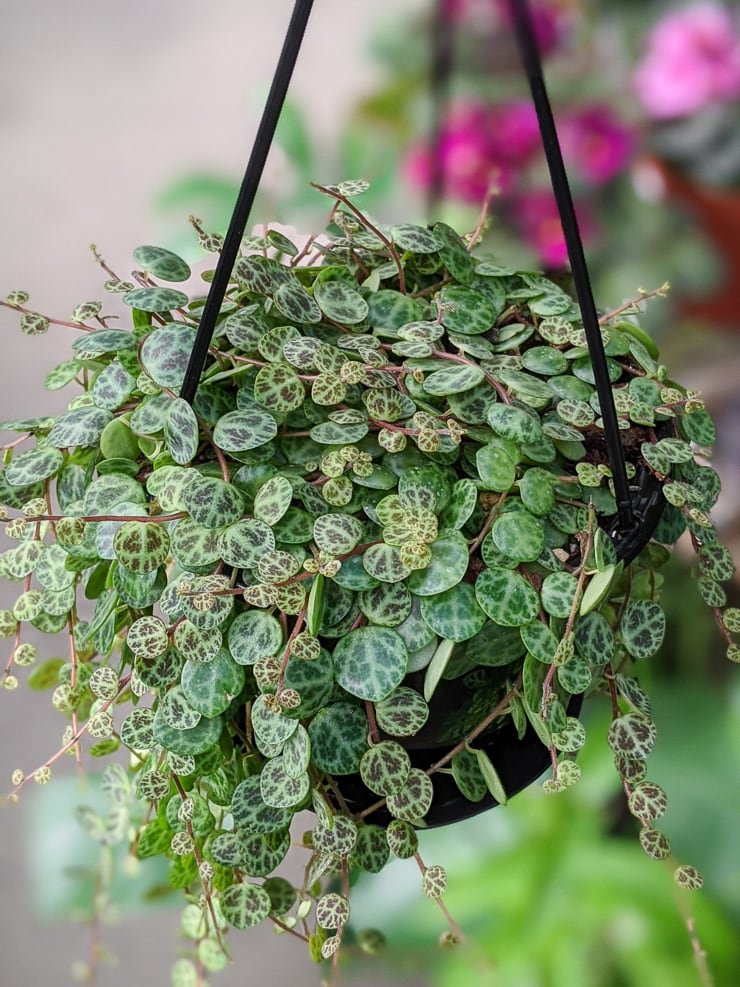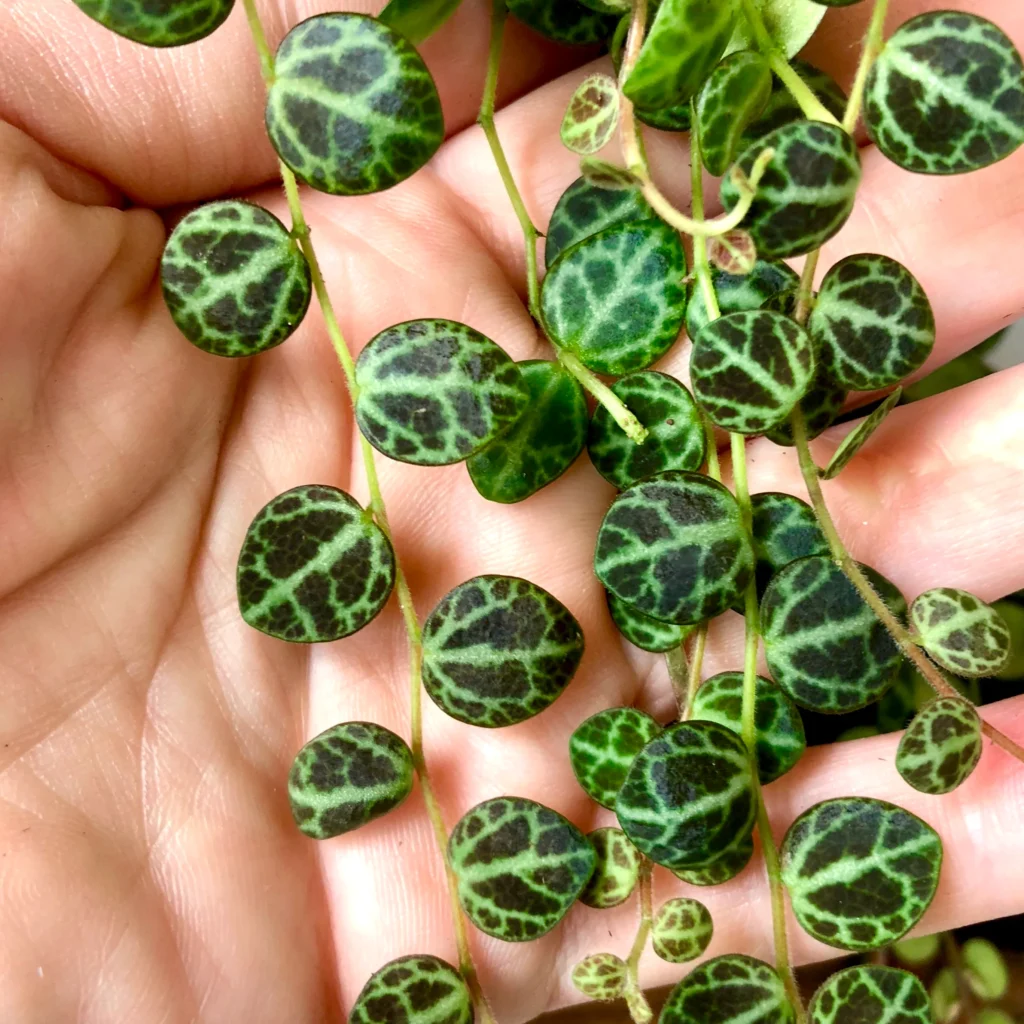Peperomia Prostrata: A Guide to Cultivating and Caring for This Beautiful Succulent





String of Turtles: Peperomia prostrata, also known as String of Turtles or Turtle Vine, is a stunning succulent plant with cascading vines adorned by tiny, turtle-shaped leaves. This charming plant is popular among succulent enthusiasts due to its unique appearance and ease of care. In this comprehensive guide, we will delve into the cultivation and care tips for Peperomia prostrata, ensuring that you can enjoy the beauty of this captivating succulent in your own home.
String of Turtles:
Peperomia prostrata is a low-growing succulent that features trailing vines that can reach lengths of up to 12 inches (30 cm). The leaves are small and round, resembling tiny turtles, hence the plant’s common name. The leaves have a green coloration, adorned with intricate silver markings that resemble the patterns found on turtle shells. The trailing vines make it an ideal choice for hanging baskets, terrariums, or trailing down shelves.
Growing String of Turtles:
2.1 Light Requirements:
Peperomia prostrata thrives in bright, indirect light. Place it near a window where it can receive bright, filtered light for several hours a day. Avoid exposing it to direct sunlight for extended periods as it can scorch the delicate leaves.
2.2 Temperature:
This succulent prefers average to warm temperatures ranging between 65°F and 80°F (18°C – 27°C). It is important to protect it from cold drafts and sudden temperature fluctuations.
2.3 Soil:
A well-draining soil mix is crucial for Peperomia prostrata. Use a combination of peat moss, perlite, and coarse sand to create a light and airy soil mixture that allows excess water to drain away.
2.4 Watering:
Water the plant when the top inch of the soil feels dry. Overwatering can lead to root rot, so it is important to allow the soil to dry out between waterings. During winter months, reduce the watering frequency to prevent waterlogged soil.
2.5 Humidity:
Peperomia prostrata appreciates moderate humidity levels. You can increase humidity by placing the plant on a tray filled with water and pebbles, ensuring that the water level does not touch the pot’s bottom. Misting the plant occasionally also helps to create a humid environment.
Maintenance for String of Turtles:
3.1 Fertilization:
Feed Peperomia prostrata with a balanced, water-soluble fertilizer diluted to half strength during the growing season (spring and summer) every 4-6 weeks. Avoid fertilizing during the winter months when the plant is dormant.
3.2 Pruning:
To maintain a bushy and compact appearance, trim back the vines as needed. Pinch off the tips to encourage branching and fuller growth.
3.3 Propagation:
Peperomia prostrata can be propagated through stem cuttings. Simply take a healthy cutting with a few leaves, remove the lower leaves, and place it in a moist potting mix. Keep the soil lightly moist and provide the cutting with indirect light until roots develop.
Common Issues:
4.1 Overwatering:
Overwatering can lead to root rot and other fungal diseases. Ensure that the soil dries out between waterings and avoid leaving the plant sitting in standing water.
4.2 Pest Infestations:
Peperomia prostrata is generally resistant to pests, but occasional infestations by mealybugs or spider mites can occur. Regularly inspect the plant for any signs of pests and treat them promptly using appropriate organic or chemical methods.
Conclusion:
Peperomia prostrata, with its captivating turtle-shaped leaves and trailing vines, is a delightful addition to any succulent collection. By following the cultivation and care guidelines outlined in this guide, you can provide the optimal conditions for your Peperomia prostrata to flourish. Enjoy the beauty of this unique succulent and watch as it brings a touch of whimsy and charm to your indoor space.